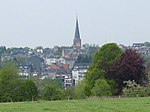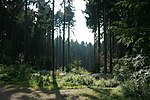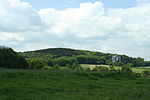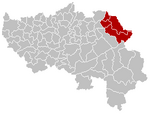Hergenrath
Former municipalities of Liège ProvinceKelmisPopulated places in Liège ProvincePopulated places in the German-speaking Community

Hergenrath (German pronunciation: [ˈhɛʁɡn̩ˌʁaːt]) or Hergenraedt (Standard Dutch: Hergenraat; Limburgish: Herjent) is a village and sub-municipality in Belgium. It is located in the municipality of Kelmis in Liège Province, part of Wallonia. It is part of the German-speaking Community of Belgium.
Excerpt from the Wikipedia article Hergenrath (License: CC BY-SA 3.0, Authors, Images).Hergenrath
Winkelstraße,
Geographical coordinates (GPS) Address Nearby Places Show on map
Geographical coordinates (GPS)
| Latitude | Longitude |
|---|---|
| N 50.7077 ° | E 6.0327 ° |
Address
Winkelstraße
Winkelstraße
4728 (Hergenrath)
Liège, Belgium
Open on Google Maps











